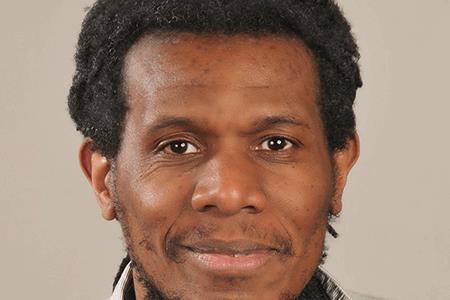Is The Cuban Biopharma Industry A Forerunner Of Pharma 3.0? Part 2
By Andrés Cárdenas-O'Farrill, Cuban economist, associate researcher, Academic-Industry Research Network (theAIRnet)
 Part one of this article ran in our April issue and explained how Pharma 3.0 focuses on health outcomes and stresses open collaboration platforms and long-term partnerships with nontraditional players in order to gain access to underserved markets. The article also explained how Cuban biopharma is part of a broader plan and how the regulator’s role within the industry is a key aspect of these broader integration efforts.
Part one of this article ran in our April issue and explained how Pharma 3.0 focuses on health outcomes and stresses open collaboration platforms and long-term partnerships with nontraditional players in order to gain access to underserved markets. The article also explained how Cuban biopharma is part of a broader plan and how the regulator’s role within the industry is a key aspect of these broader integration efforts.
PRIMARY CARE AS BIOTECH’S ASSESSMENT TOOL
Constraints imposed by the U.S. embargo have hampered Cuba’s healthcare funding and access to mainstream medicines and technologies. Thus, the island’s health policy emphasizes basic primary and preventive care, addressing diseases and problems before they can become major issues.
Equally important, primary care also has provided a formidable backbone for biomedical research, enabling massive informed-consent participation in clinical trials of new medications and vaccines. Likewise, it plays an important role by collecting community-based information about specific clinical and epidemiological patterns affecting each region. This allows the creation of comprehensive national records that help determine which health issues pose the greatest risk to society. This information, in turn, contributes to better allocation of resources to deal with risk and channels the sector’s creativity in ways that lead to more socially productive innovation. It is more humane, faster, and cheaper. It is also astoundingly similar to the patient rapprochement mechanisms included in the new holistic approach envisioned by Pharma 3.0.
This commitment to primary and preventive care started during the 1960s when the government established a system of integrated community clinics (polyclinics). Cuba’s medical facilities remain focused on primary care, with family medicine required as the first residency for all physicians.
This organizational structure has made it possible for the innovative diagnostic tools developed by the industry to be quickly integrated into the health system through primary care services. This is the case of SUMA technology (a screening system designed to solve the country’s needs for diagnostic technology), which is an indissoluble element of several programs of Cuba’s healthcare system. In fact, these programs are related to a network of diagnostic laboratories and screening centers available in each municipality of the country. This is also the case of CIMAvax-EGF, which is an innovative therapeutic cancer vaccine (currently under clinical trial in the U.S.), whose approval and assessment in Cuba have had family doctors and primary care facilities strongly involved.
SHARING HEALTH INFORMATION TECHNOLOGY, DATA
The economic crisis at the beginning of the 1990s had devastating effects throughout Cuban society. One of the most affected activities was the exchange and updating of specialized information for healthcare researchers. Resources for academic and practitioner- related knowledge (e.g., books) were scarce, so health information professionals came up with a creative way to solve the problem: INFOMED.
INFOMED was founded in 1992 as the Cuban National Health Care Telecommunications Network and Information Portal. Healthcare innovators created a digital infrastructure to support healthcare information, using computers to establish a virtual space for exchange among research institutes, medical faculties, primary care institutions, hospitals, and eventually with the international scientific community.
This innovation contributed to one of the key goals of Cuban biotech by providing a platform for continuous data collection, analysis, and dissemination within the system, while simultaneously reducing costs. When Cuba connected officially with internet in 1996, the flow and exchange of information exploded. In 2002, INFOMED was awarded the Stockholm Challenge Prize in the health category for life-improving information technologies.
THERE IS, INDEED, A SIMILITUDE
Given the above, the idea of the Cuban biotech as a forerunner of Pharma 3.0 doesn’t seem that far-fetched. The notions of engaging with patients, developing ongoing relationships with them and collecting their data with their informed consent, identifying target populations, focusing on prevention and data sharing, and so on have long been crucial features of Cuba’s biomedical complex. This commitment to prevention, integration, and collaboration has turned out to be an opportunity for both innovation and high-quality healthcare delivery.
Of course, there is no room for romanticizing here. The Cuban healthcare system is a gigantic task carried out by a poor country under extraordinarily tight conditions. It is not a perfect system (there is no such system). Particularly in the last decade, some critics have noted their dissatisfaction with issues such as material shortages, inefficiencies, and low wages, all of which are compounded by the constraints imposed by the U.S. embargo. Despite these issues, Cuba has still been able to produce a huge number of innovative and affordable drugs to tackle diseases that run rampant in low-, middle- and even high-income countries.
The story of the Cuban biopharmaceutical industry provides a remarkable example of how openness, long-term care, and integration can save significant time and cost. This has finally begun to be recognized by the movers and shakers of the pharmaceutical industry worldwide. Welcome Pharma 3.0, but please remember the Cubans.
